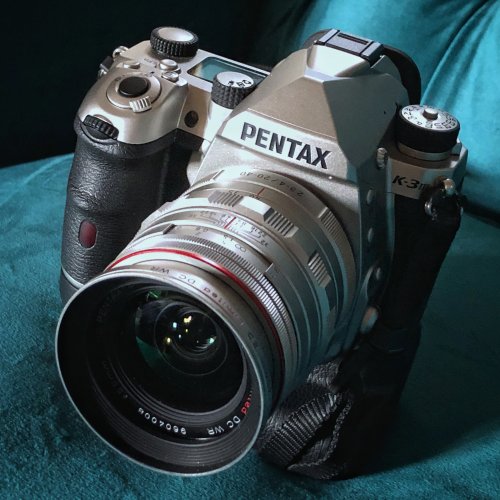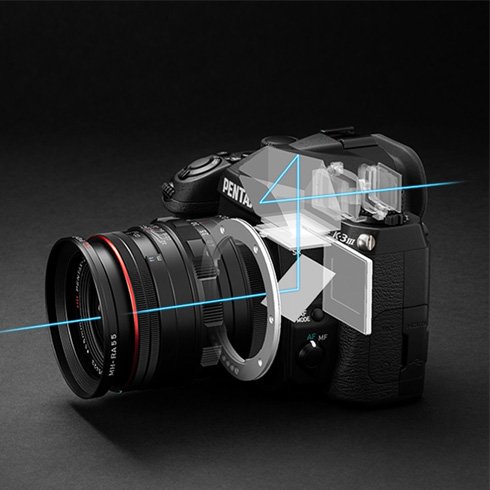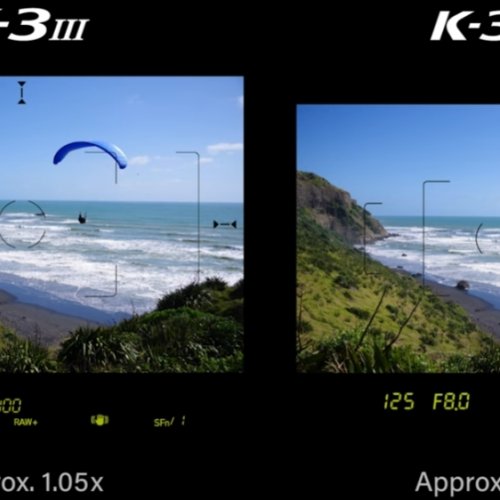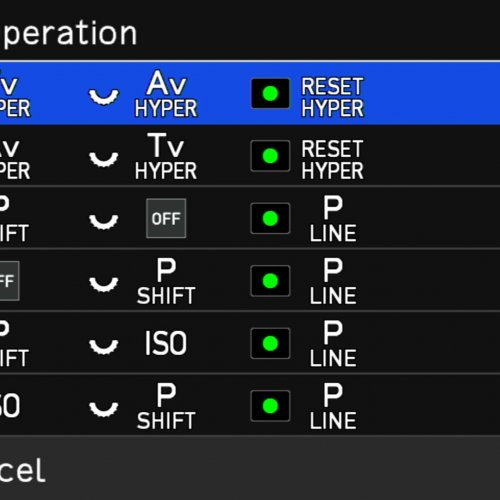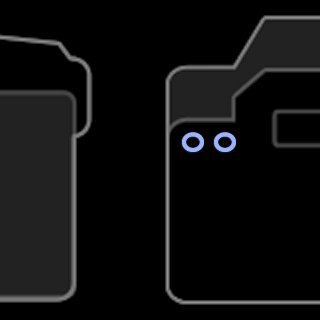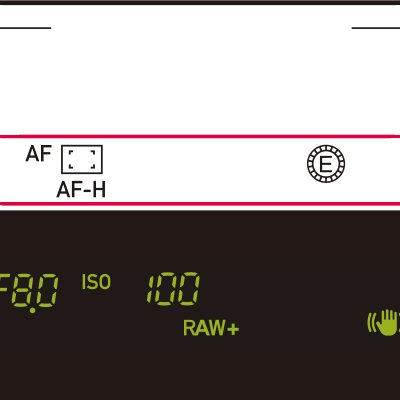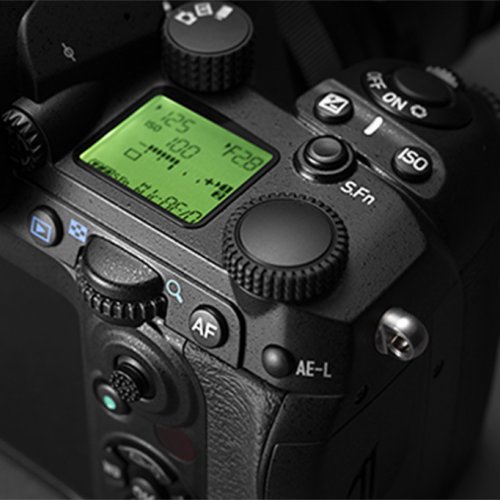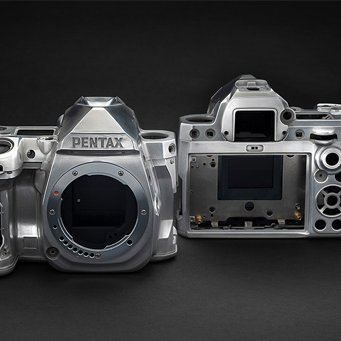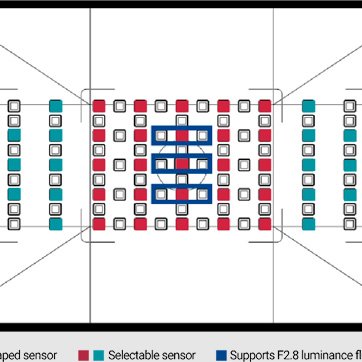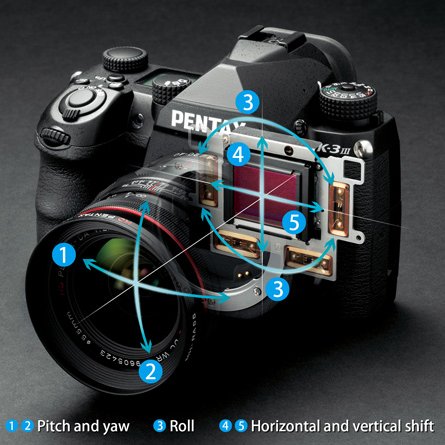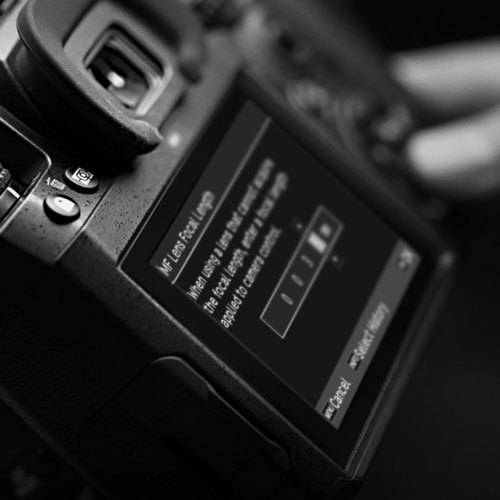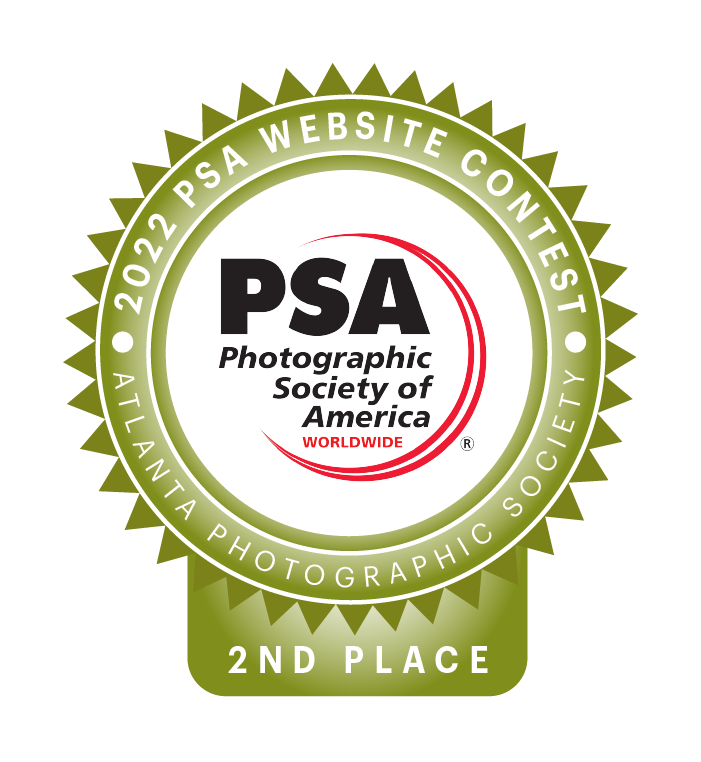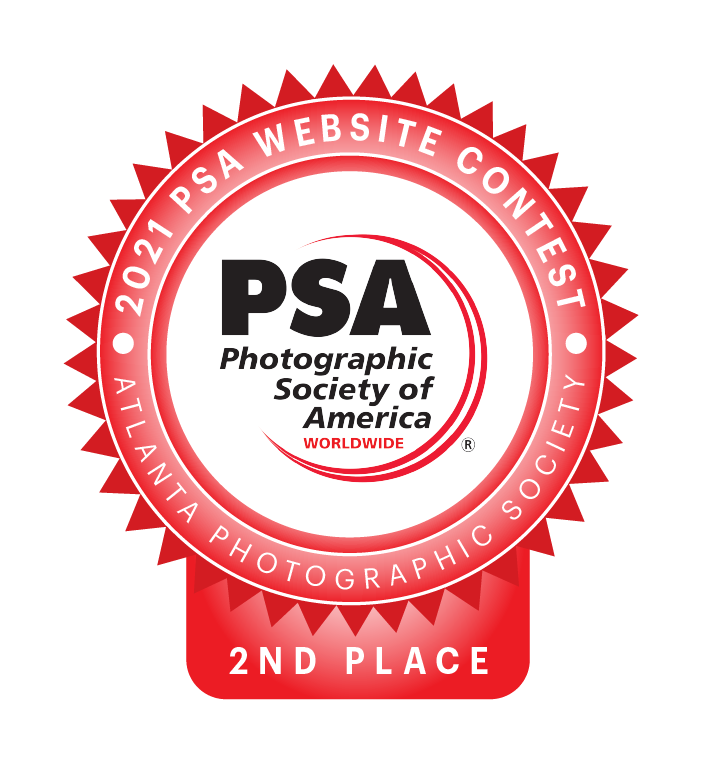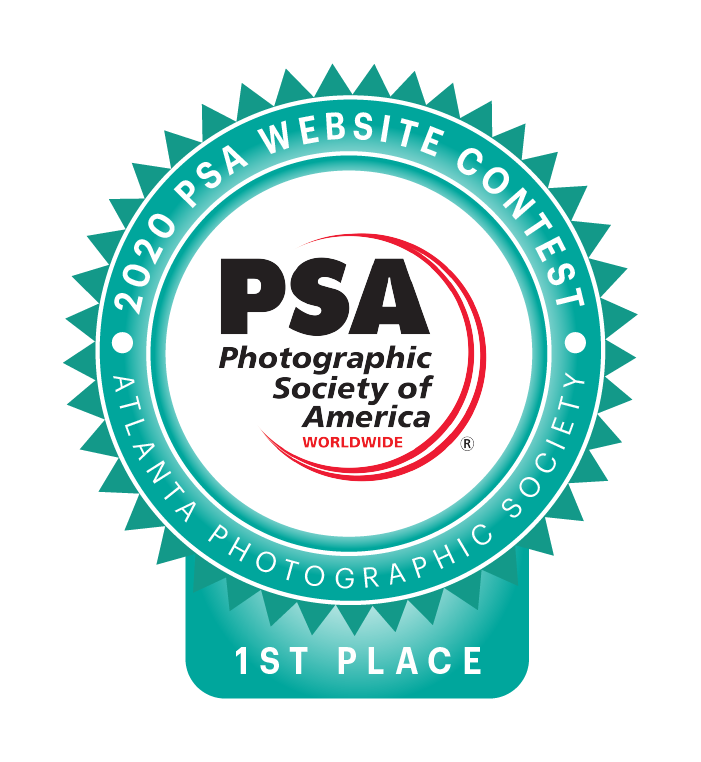Overview, Features, Specs, Etc.
Just under a year ago I bought a new camera - the Pentax K3 mark iii. It's a DSLR (Digital Single Lens Reflex). I'm sure you're familiar with "Digital." But many of you with mirrorless cameras may have forgotten about the humble Single Lens Reflex. Well, the DSLR is still a thing, and a modern SLR camera can be pretty amazing!
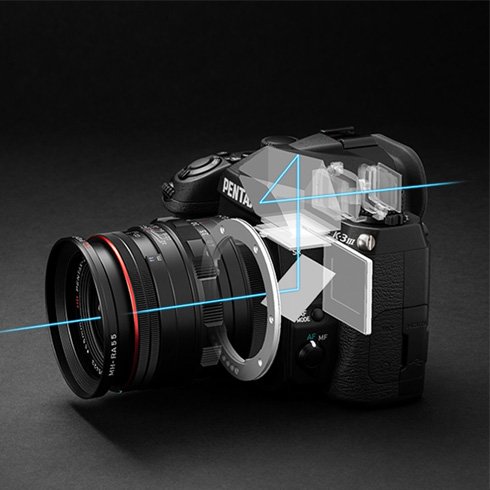
Pentax K3 mark iii (courtesy of https://us.ricoh-imaging.com/)
While I'm definitely not a gear hound, I will be mentioning lots of specs and features of this remarkable camera. If you want to review all the manufacturer's specs go to the Pentax site. For more detail peruse the Pentax K3 iii manual.
Now let's get to my take on the things that make the K3 mark iii the right camera for me, and worth considering for you.
Optical Pentaprism Viewfinder
Pentaprism viewfinders were the pinnacle of camera technology for about 60 years. Lately, with the advent and improvement of mirrorless cameras, the pentaprism seems to have fallen out of favor with many camera makers and a lot of photographers. I'm not one of those, and here is why.
Modern Optical Pentaprism Viewfinder's are Excellent
The APS-C (Crop Sensor) Pentax K3 iii's viewfinder has a 100% field of view, and approx. 1.05X magnification, along with a 10-percent increase in brightness due to a special, new pentaprism glass. The result, a truthful, wide-view image equal to that of a full-frame camera. I've really loved this viewfinder for the past year; it reminds me of the huge, bright view using film SLR cameras.
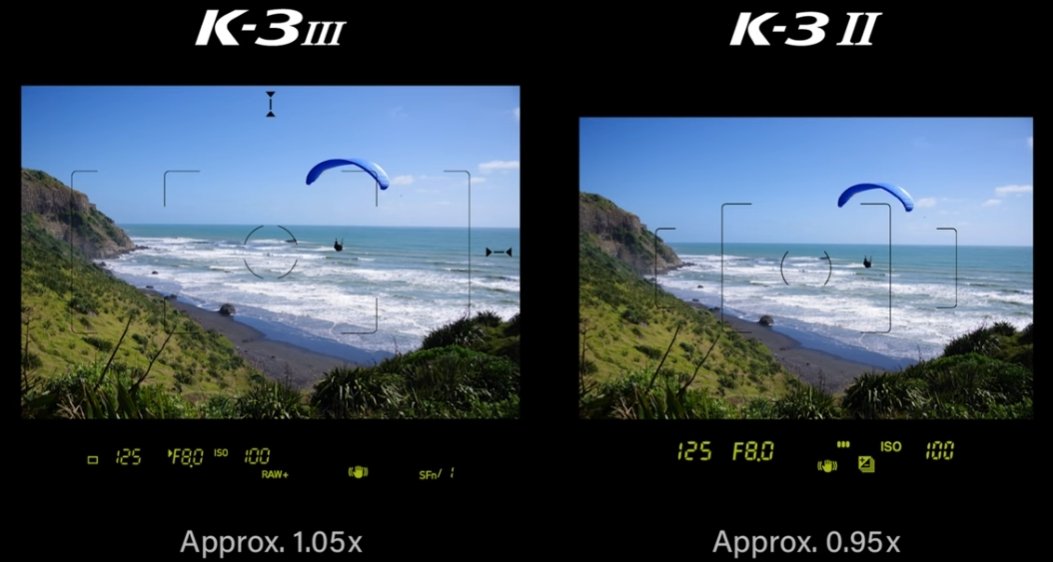
Viewfinder Comparison (courtesy of https://us.ricoh-imaging.com/)
The Human Eye Remains Engaged
Using a pentaprism based Single Lens Reflex camera your eye sees (almost exactly) what the camera sensor sees, not a processed image that can never fully encompass what the scene presents. Removing the full, astounding capabilities of the human eye from the image capture process greatly reduces one's ability to see and interpret the nuances of your scenes and subjects. Bottom line, I like the SLR shooting experience much more than using any electronic viewfinder/mirrorless experience (or live-view experience for that matter).
Let's consider this short list of the the remarkable capabilities of the the human eye. (This list is based on: If Your Eye was a Camera What Would the Specs be?)
Resolution ~130-500 megapixels. (That's way better than any sensor or screen. Bring a bottle of Scotch & we can argue about this estimate.)
Frame Rate ~200-300 frames per second. (Our cameras can't do that. (Although some really big $ ones can.))
ISO normal lighting: 1-1000 (1 !- wow! The human eye can look at really bright things without a neutral density filter.)
low light: 16,000
night vision (dark adapted): 800,000 (Ditto!)
Dynamic Range: 20-21 stops (Ditto!)
Bonus Features: Stereo/3D, Image Stabilization, and Content aware fill (blind spot)
I say our eyes are great! And we should use photographic tools (cameras) that take full advantage of the human eye's enormous range of capabilities. To my point of view, looking through the optical viewfinder of a DSLR fills that bill, while mirrorless cameras, even with their newest higher resolution screens do not.
High Dynamic Range and Low Noise
With the latest 26 megapixel back-illuminated CMOS sensor the Pentax K3 iii covers an ISO range of 100 to 1600000 (EV steps can be set to 1EV, 1/2EV or 1/3EV) and a Maximum Photographic Dynamic Range (PDR ) of 11.03 stops.
While that 1.6 million ISO can be dialed, I've found that a useful ISO upper limit for the main types of shooting I do is about 6400 - 12800. Still, the camera's low light/high ISO performance is clearly outstanding. Measurements put the K3 iii in the same realm as the FujiFilm GFX 100 and the Phase One IQ3 100MP. Please take a look at this Photographic Dynamic Range Versus ISO Setting chart and accompanying table from Photons to Photos.
Ergonomics, Customization and Smart Functions
Based on about a year's experience with the camera, everything about the Pentax K3 iii fits like a glove. It's superbly comfortable in the hand, and every button, dial and feature you need to get to quickly is right where it needs to be. Plus, numerous buttons (and both dials) can be easily customized to fit the ways that you shoot.
Custom Dials
The front and back dials can quickly be customized to your liking. My custom settings are these: for Aperture Priority - back is aperture, front is ISO; for Shutter Priority - back is shutter speed, front is ISO, for Manual - back is aperture, front is shutter speed (and the handy ISO button is used for ISO).
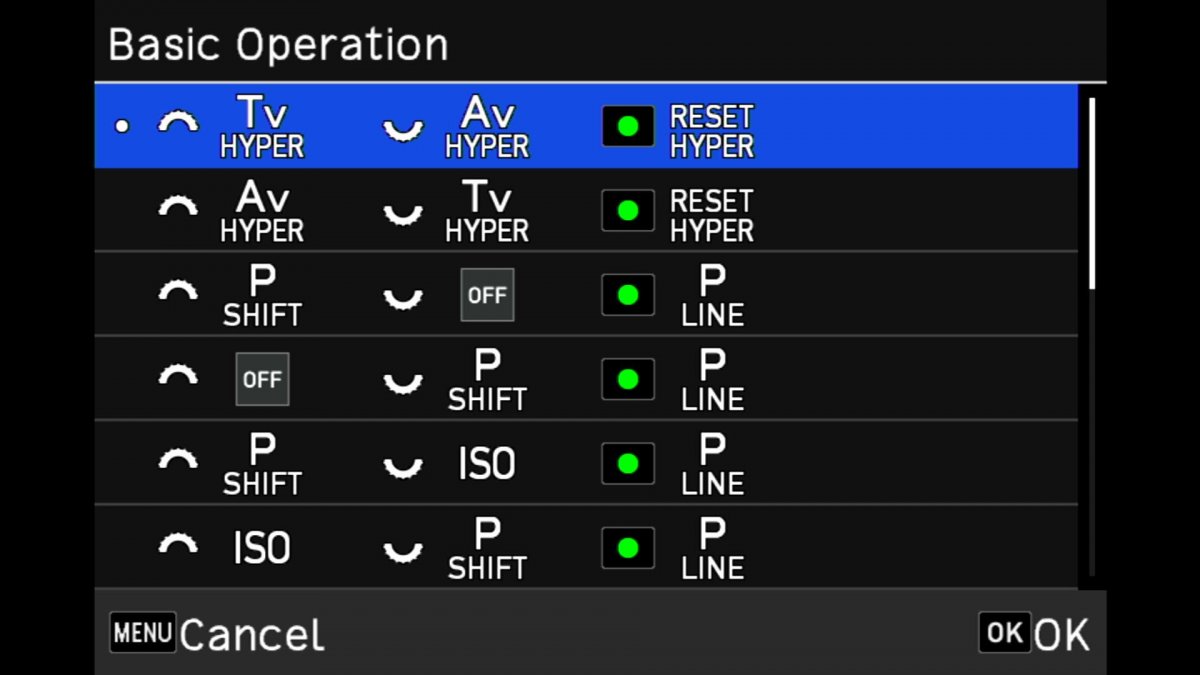
Easy to customize the dials (courtesy of https://us.ricoh-imaging.com/)
Custom Buttons
Most buttons can also be customized. For example, for my purposes I custom-tailored these: the back button focus to turn off auto focus; thus, I can quickly reframe my "spot-focused" area to anywhere within the frame, even in continuous focus mode. To quickly use Astrotracer, I set the "lock" button to Red (low light) Display and the AE-Lock button to toggle on/off the back light of the top LCD panel. Those two customizations insure that one's "dark adapted" eyes don't get "flashed" by one of the displays when doing night-time or astrophotography.
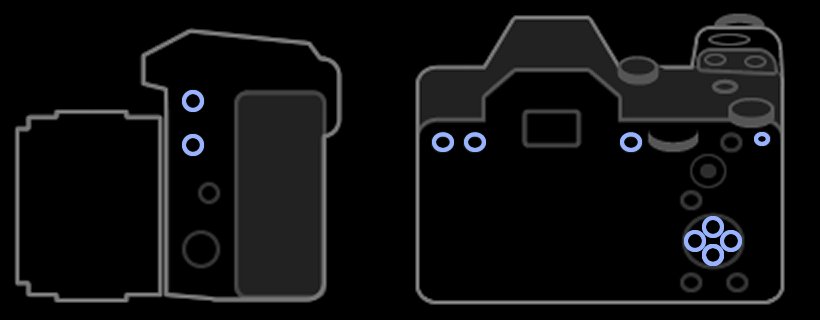
Many Buttons that can be customized (courtesy of https://us.ricoh-imaging.com/)
New Smart Function
The new Smart Function button lets you preprogram a maximum 10 fully customizable user modes that can be allocated to 5 dial modes. There are 22 options to pick from. Selected functions are displayed in the viewfinder window.
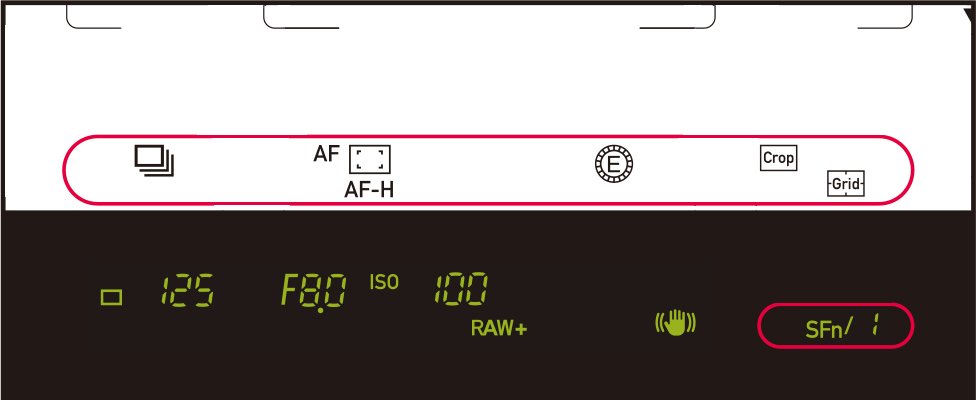
Smart Function Viewfinder Display (courtesy of https://us.ricoh-imaging.com/)
I'm just starting to use the Smart Function features, and it sure is handy knowing they are there if and when I might need them!
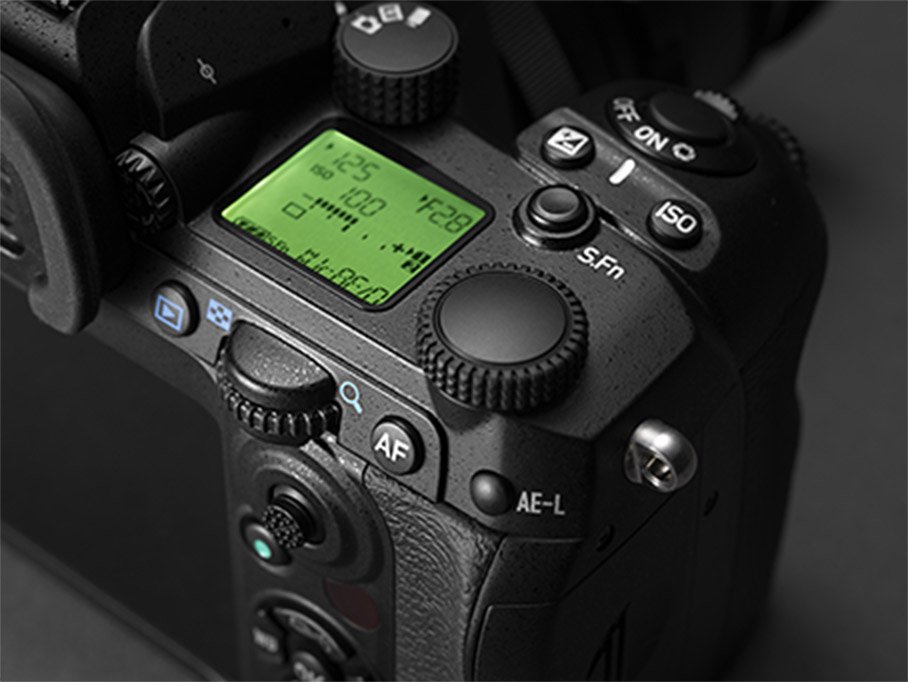
Smart Function button and dial (courtesy of https://us.ricoh-imaging.com/)
The main take-away here: how "good" a camera is, isn't solely due to it's specifications! How easy those important features are to use in practice for your styles of shooting are what make the camera an enjoyable and useful tool.
Rugged Construction
Since much of my photography is done outdoors focusing on landscapes and nature in forests, mountains and streams, where weather conditions change rapidly, I really appreciate the tough magnesium body frame, and the fully water resistant body (and lenses). Both the body and the optional D-BG8 Battery Grip (which I also use) are designed to be dustproof and weather-resistant to prevent the intrusion of dust and water. This overall ruggedness also includes the 300,000 count rated shutter and cold-resistant performance down to -10°C (14 F).
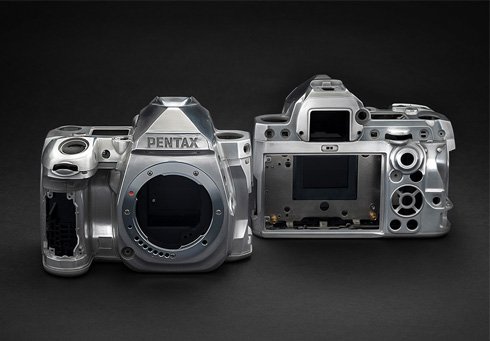
Magnesium Frame (courtesy of https://us.ricoh-imaging.com/)
High Frame Rate
For fast action including sports, music, dance, birding and wildlife the K3 iii will do 12 images per second in the AF.S mode, or about 11 images per second in the AF.C mode. I don't need these capabilities often; they are there when I do.
High Precision Autofocus/Focus Tracking and Scene Analysis
This new generation DSLR now has 101 focus points and the sensitive center points operate down to -4EV illumination. That is very low light, and superbly handy for reframing your focus point.
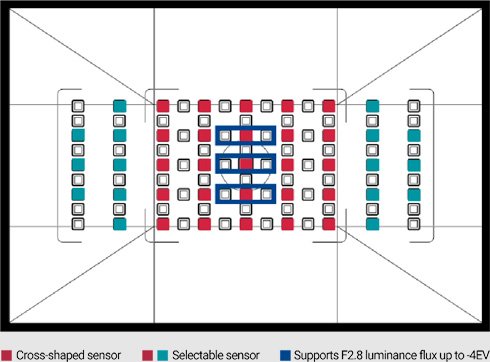
Focus Point Visible in the Viewfinder (courtesy of https://us.ricoh-imaging.com/)
Focus Tracking of moving subjects is enabled by a high-capacity RGBIr image sensor with approximately 307,000 pixels. This sensor, combined with real time image processing, provides accurate tracking of subjects in motion and accurate detection of the subject's face and eyes in viewfinder shooting.
Shake Reduction, Pixel Shift and Astrotracer
In-Body Shake Reduction
Long a staple of Pentax cameras, in-body shake reduction using movement of the sensor incorporates horizontal and vertical shift, roll, pitch and yaw (5-axies), with a wide compensation range up to 5.5 stops. And the panning mode is easy to access.
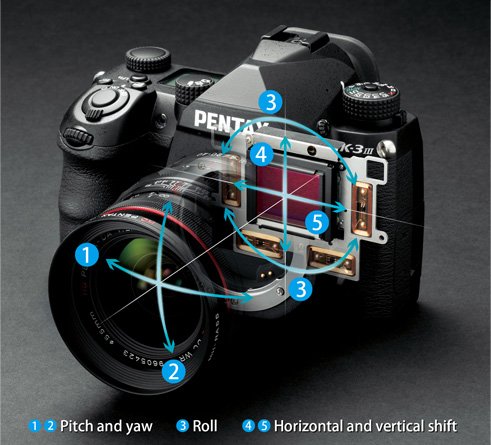
In-body shake reduction system (courtesy of https://us.ricoh-imaging.com/)
Pixel Shift
In-Body Shake Reduction sensor movement also allows Pentax's Pixel Shift capability. This captures four images of the same scene by slightly shifting the image sensor for each image to obtain all RGB color data for each pixel, then synthesizes them into a single, higher-resolution composite image.
![]()
Pixel Shift - A Series of Four (4) One Pixel Sensor Movements (courtesy of https://us.ricoh-imaging.com/)
Astrotracer - With or Without GPS
For nearly a decade Pentax has pioneered it's unique Astrotracer mode using either built-in GPS (In some cameras) or accessory GPS with the optional new hot-shoe mounted O-GPS2.
The GPS unit calculates the movement of celestial bodies using the latitude obtained from the location data and the camera’s alignment data (horizontal and vertical inclinations) detected by the electronic compass and acceleration sensors. During the exposure it shifts the camera’s image sensor in synchronization with the movement of the celestial objects. This means that stars and other bodies are captured as solid points rather than blurry streaks, even during extended exposures.
Astrotracer Type 3
Earlier this year (2022) Pentax introduced it's new night sky photography mode, Astrotracer Type 3 through a simple firmware update. This brilliant new way to photograph the night sky works without a GPS! The camera takes a test image, calculates the stars movement, then captures a longer exposure image moving the sensor to track the movement of the stars.
See this Petapixel article, New Pentax K-3 Mark III Update Improves Astro Photos Without GPS, for more about Astrotracer Type 3, and this link to Pentax for more information about using Pentax cameras for astrophotography.
Wide Array of Lenses AND Backward Compatible With Old Lenses
Last, it bears mentioning that even the newest Pentax DSLR's are backward compatible with all K-mount lenses, including manual lenses and old lenses with an aperture ring. To use an old manual K-mount lens on a new state-or-the-art Pentax DSLR, one just inputs the focal length of the lens. It's that simple. Built-in obsolescence is NOT a feature of Pentax lenses. This brochure covers Pentax's current lens line up.
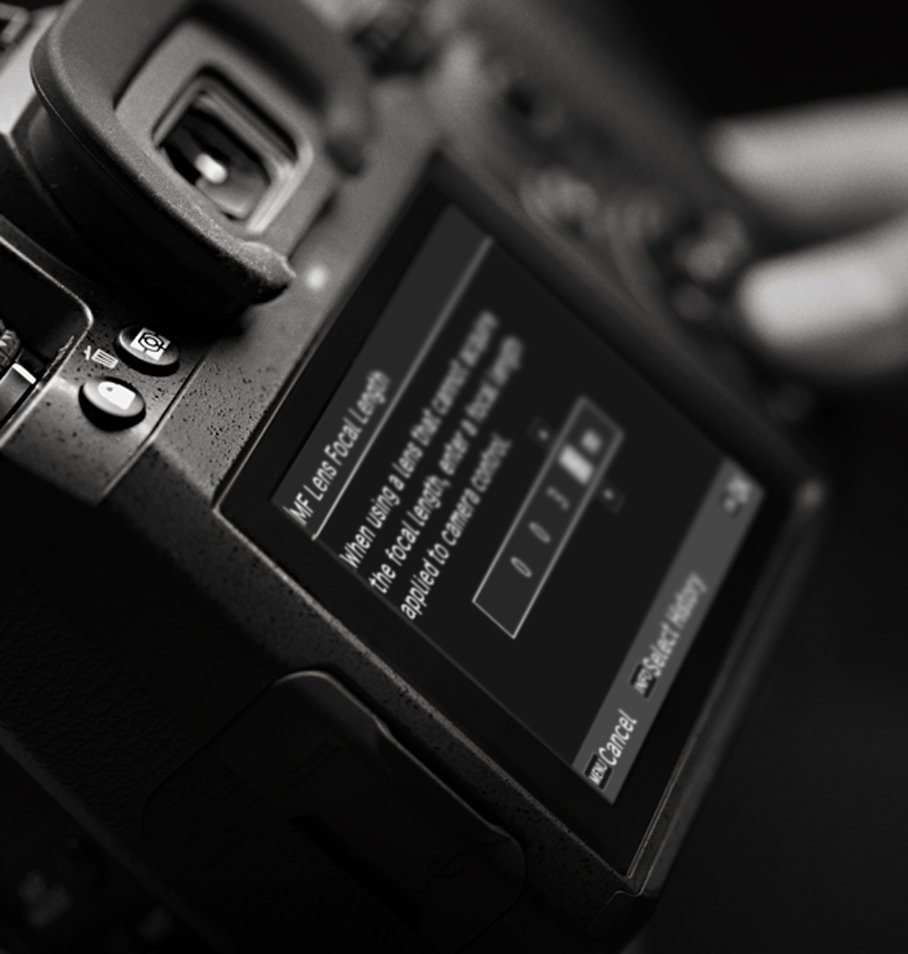
Input Focal Length to Use a Manual Lens (courtesy of https://us.ricoh-imaging.com/)
Conclusions
Wow, I've left out so many great things - custom control panel, 4K video, wireless LAN, unique TAv exposure mode, "Green Button" exposure (one button Auto Exposure no matter what mode you're in), easy bracketing, interval shooting (for time lapse) and interval composite, multiple exposure w/composite modes, mirror lock up, bulb w/timer (1 second to 20 minutes), multi-auto white balance, RAW image development, 5 custom User modes, lens distortion and refraction corrections, USB-C charging and more... !
This modern DSLR, the Pentax K3 mark iii, is very close to "state-of-the-art." It does everything I want it to do, easily and quickly, and with great image quality. It pioneers several important features that most other cameras do not have. And it didn't make any of my lenses obsolete. It is simply a very powerful and supremely flexible pleasure to use.
Questions, Thoughts and Opposing Viewpoints?
What are your thoughts and questions about DSLRs? Mirrorless cameras? Thanks!
Disclaimer: These are my thoughts and opinions, not those of APS.


